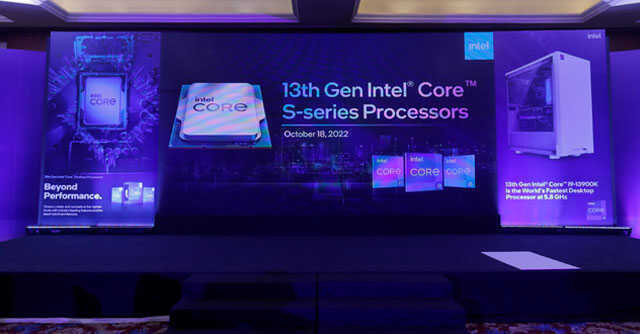
Intel brings its 13th gen processors to India


Intel announced the launch of its 13th generation processor lineup in India, today. The company said in a statement that the lineup features six unlocked processor models, in a full lineup of 22 processors. The lineup will be available for desktop PC builders, and Intel has showcased the same across 125 reference designs of desktop PCs globally.
The unveiling comes shortly after the company showcased its new generation chips globally on September 28, a day after rival processor maker AMD unveiled its Ryzen 7000 series globally. At its global showcase, Intel said that its new generation processors will offer a 41% improvement over its previous generation in multi-threaded performance — which is key for multitasking.
The company’s new chips also accompany a new motherboard series, the Intel 700, on which the company says its new processors will work best. The new chips are also built to make the most of the DDR5 RAM standard, although it will work with DDR4 memory as well. This is in contrast to AMD's offerings, which will require DDR5 memory and a new generation motherboard with AM5 processor sockets to work.

At its launch event, Santhosh Viswanathan, managing director of sales and marketing at Intel India, told Mint in an interview that the company continues to expect increased enthusiast interest in PCs, even as industry analysts have noted a drop in consumer demand and discretionary expenses in line with macroeconomic headwinds, and saturation of consumer devices after two years of sustained growth through the Covid-19 pandemic.
Viswanathan added that Intel has seen a rise in the demand for premium PC components, priced at around $600 (approximately ₹50,000), through the present year.
Industry reports, however, have cautioned of a slowdown in global PC shipments. A Gartner report from June 30 pegged the PC segment to decline 9.5% annually, in calendar year 2022. A September 19 report by market researcher Canalys said that PC shipments in India, which include laptops, desktops and tablets, fell below 5 million units for the first time in four quarters — after two years of growth buoyed by the demand for larger screens and devices for remote work and education.

While analysts peg this correction to be natural, the report cites that the quarterly shipment figure is a reflection of a drop in organic consumer demand in the country.
